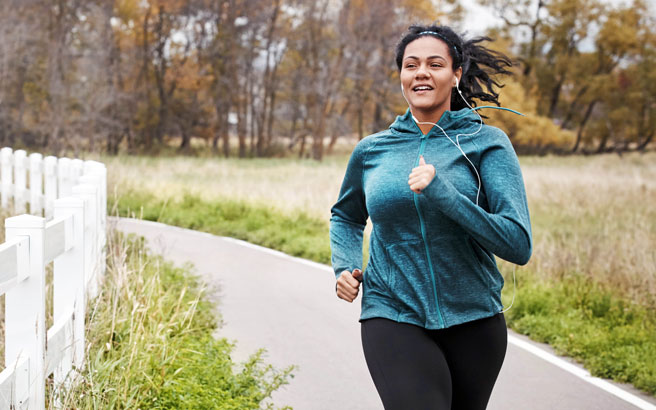Breast cancer is now the most common cancer in the world. We asked our researcher to explain how physical activity plays a key role in reducing breast cancer risk.
Evidence suggests that inactivity and sitting down too much increase a woman’s risk of breast cancer, and that exercise after a breast cancer diagnosis lowers a woman’s risk of dying from cancer. How close are we to knowing how strong these links are?
Brigid Lynch: I think we are now at a point where we can say that physical inactivity causes breast cancer. The evidence is consistent and robust, and we can triangulate evidence from:
- observational studies
- Mendelian randomisation [a research method that uses genetic variants associated with risk factors of interest to examine causal effects]
- systematic reviews [a structured analysis of all the literature on a particular topic]
The evidence isn’t as clear for sedentary behaviour, as there are far fewer studies on this topic.
There is also less robust evidence for exercise after a breast cancer diagnosis. The research on this topic comes from observational studies, which are subject to considerable selection bias [arising from errors in choosing the individuals or groups to take part in a study], measurement error, and reverse causation [attributing a cause from a consequence]. So we need additional, carefully-designed studies on these latter two topics.
> More on physical activity and breast cancer survivors
What’s going on in a woman’s body when she does or doesn’t exercise? It may seem strange that exercise, which we assume is to do with muscle/bone/respiratory/cardiological health, can have such an impact on a small group of cells in a woman’s breast.
BL: We recently concluded a study funded by Wereld Kanker Onderzoek Fonds [the Dutch part of the World Cancer Research Fund International network]. In this project we systematically reviewed and meta-analysed the mechanistic [biological] evidence linking physical inactivity to breast cancer risk, focusing on 3 potential biological pathways:
- sex steroid hormones
- insulin/insulin-like growth factor (IGF) signalling [IGF is a protein that can promote cell division and inhibit cell death, which can lead to tumour development]
- inflammation
We found clear evidence that sex steroid hormones increase the risk of breast cancer, and that physical activity reduces the circulating levels of sex steroid hormones.
Although physical activity had an effect on insulin/IGF signalling and inflammation, there was minimal evidence that these pathways played a role in breast cancer risk. We weren’t able to rule out insulin/IGF signalling and inflammation as being important because there were not many high-quality, low risk of bias studies on these topics.
In summary, there is a clear biological pathway from physical activity to reduced breast cancer risk via sex hormones, particularly oestrogens and androgens. And as physical activity is important for so much more than cancer prevention, it’s critical to build this into your everyday routine!
When we talk about physical activity, are we talking about running and going to the gym? Or is it simply sitting down less?
BL: The studies that have focused on physical activity are nearly all talking about moderate to vigorous intensity activity, so this means activities that raise your heart rate and make it harder to talk while exercising. Moderate physical activity could be a brisk walk or a bike ride to the shops; vigorous physical activity uses higher levels of energy and includes running, fast swimming and aerobics.
We know that many girls exercise less in their teenage years. In light of your research on the connections between breast cancer and activity, how concerning is this?
BL: We know that people who maintain their exercise levels through childhood and adolescence into adulthood are more likely to remain active. It’s concerning that so many girls reduce their physical activity during teenage years, but there are many good programmes that are aimed to help reverse this trend.
After speaking to Prof Lynch, we asked Dr Ioana Vlad from World Cancer Research Fund International’s Policy and Public Affairs team to share examples of countries encouraging women and girls to exercise more.
- Every Body Active is a lottery-funded programme in Northern Ireland that aims to increase participation in sport among traditionally underrepresented groups, including women and girls aged 14–25.
- Universo Mujer II is a project in Spain that aims to promote and increase female participation in all areas of sport.
- Tuttingoal is a scheme by the Italian Football Federation, in collaboration with the Ministry of Education, University and Research, to encourage participation in football by school-age children, with children setting themselves up as sports clubs and building teams of 5 boys and 5 girls.
- Terre de Jeux 2024 aims put more sport in the daily life of inhabitants in France and its oversea territories.
These examples are from our MOVING database of global policies designed to promote physical activity.

